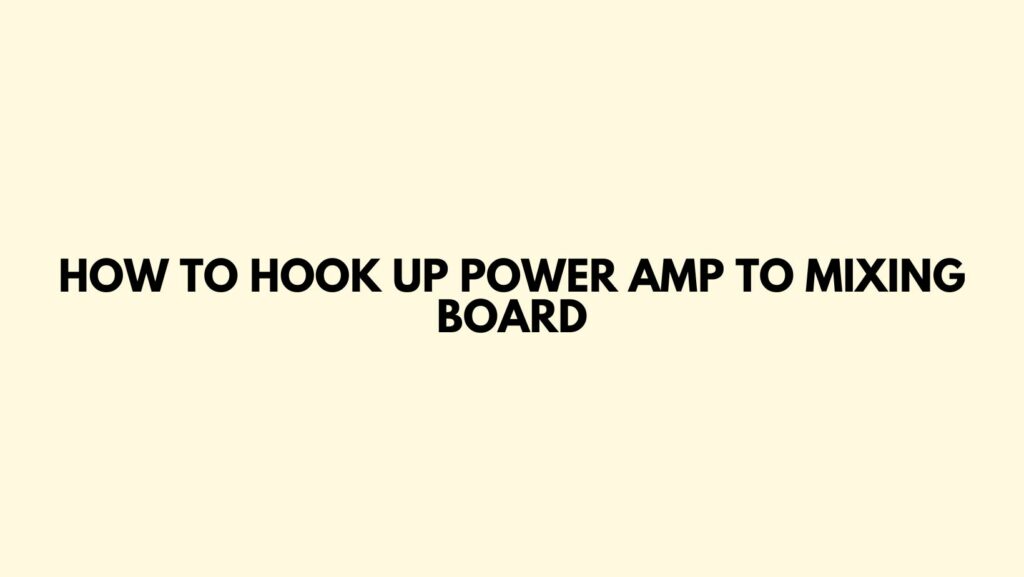In the intricate world of audio engineering, the marriage of a power amplifier and a mixing board is fundamental to achieving a balanced and powerful sound. Whether you’re setting up a live performance, recording session, or a home studio, understanding the process of connecting a power amp to a mixing board is key to unlocking the full potential of your audio setup. In this article, we’ll provide a step-by-step guide to help you navigate the complexities of this connection, ensuring a seamless and harmonious audio experience.
Understanding the Components:
- Power Amplifier: A power amplifier is a crucial component in an audio system, responsible for taking low-level audio signals from a mixing board and amplifying them to a level suitable for driving speakers. The power amp provides the necessary power to move speaker diaphragms and produce audible sound.
- Mixing Board (Mixer): A mixing board, also known as a mixer, is a central hub for audio signals, allowing users to blend, control, and manipulate multiple audio sources. It provides essential features such as volume control, equalization, and routing options.
Connecting a Power Amp to a Mixing Board:
Follow these steps to successfully connect a power amplifier to a mixing board:
- Gather the Necessary Cables: Ensure you have the appropriate cables for the connection. Most commonly, you’ll need two types of cables: balanced XLR or TRS cables for the output from the mixing board, and speaker cables for the connection to the power amp and speakers.
- Identify Outputs on the Mixing Board: Locate the main output or the subgroup output on your mixing board. The main output typically provides the mixed audio signals that need to be sent to the power amp.
- Set Levels and Adjustments: Before making any physical connections, ensure that the levels on the mixing board are appropriately set. Adjust volume levels, equalization, and any other settings as needed for your specific audio requirements.
- Connect Mixing Board Outputs to Power Amp Inputs: Use balanced XLR or TRS cables to connect the output from the mixing board to the inputs on the power amplifier. Ensure a secure connection to avoid signal loss or interference.
- Verify Power Amp Settings: Check the settings on the power amplifier. Ensure that the input sensitivity or gain is set appropriately to match the output level from the mixing board. Refer to the user manual for your specific power amp for guidance.
- Connect Power Amp to Speakers: Use speaker cables to connect the output terminals of the power amplifier to the input terminals on your speakers. Ensure proper polarity to maintain phase coherence.
- Power On the System: Before turning on the power, double-check all connections. Power on the mixing board first, followed by the power amplifier. Gradually increase the volume to avoid sudden loud noises that could damage speakers.
- Monitor and Adjust Levels: Monitor the audio output and make any necessary adjustments. Use the mixing board’s master volume control to regulate the overall sound level. Fine-tune equalization settings on both the mixing board and power amp as needed.
- Test the System: Play a test audio source through the system to ensure that all components are functioning correctly. Address any issues with the connections or settings promptly.
Conclusion:
Connecting a power amp to a mixing board is a critical step in creating a cohesive and powerful audio system. By understanding the functions of each component and following these step-by-step guidelines, you can confidently establish a connection that unleashes the full potential of your audio setup. Whether you’re a live sound engineer, a recording enthusiast, or a home studio creator, mastering this connection process is essential for crafting sonic harmony in your audio endeavors.


